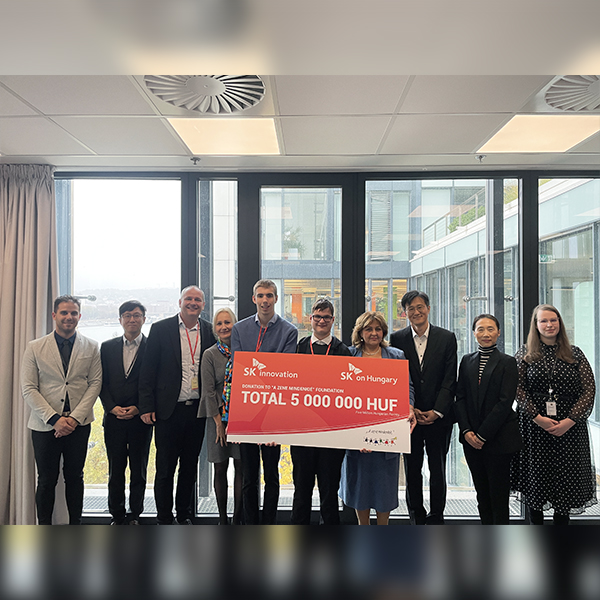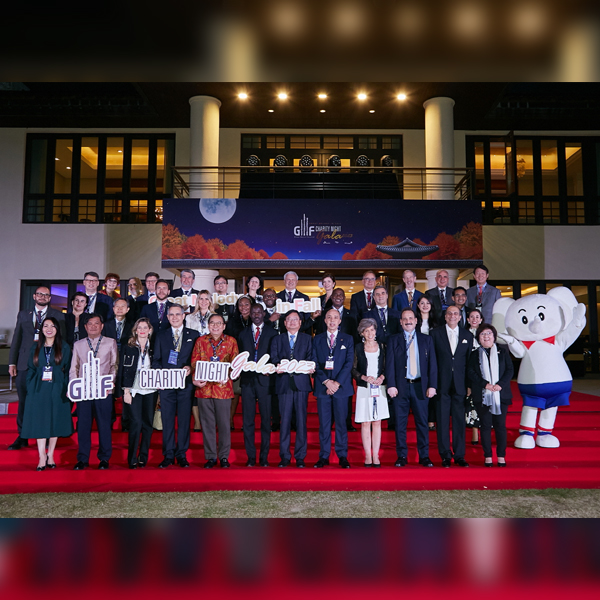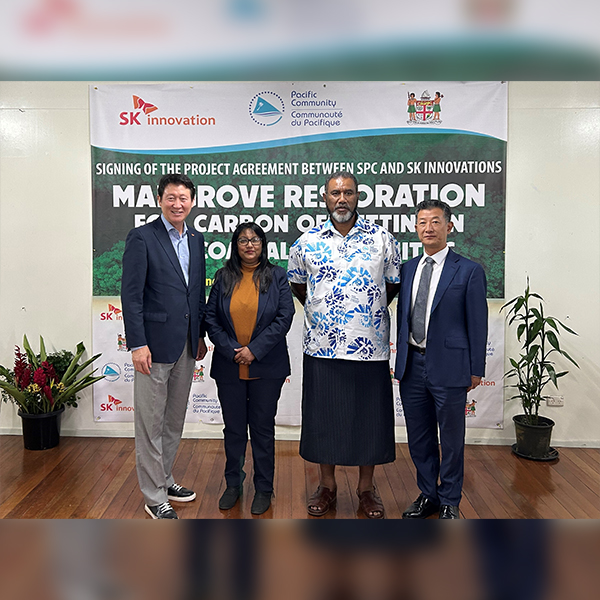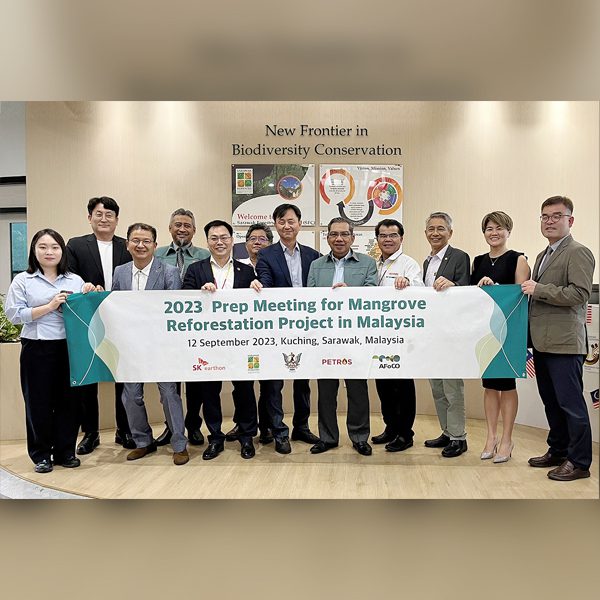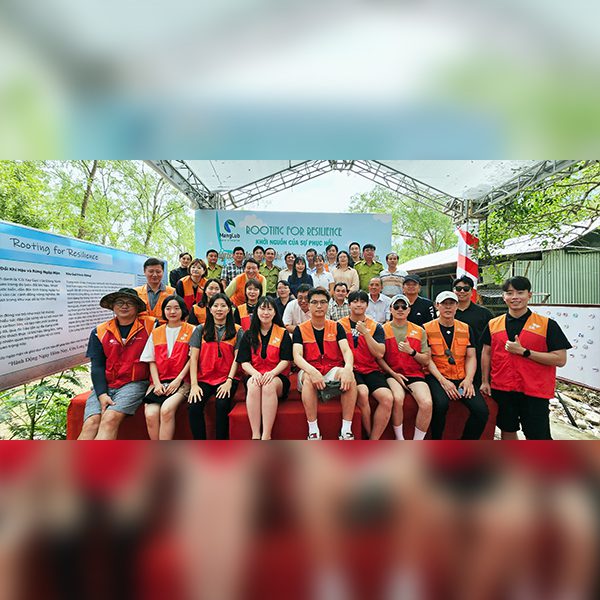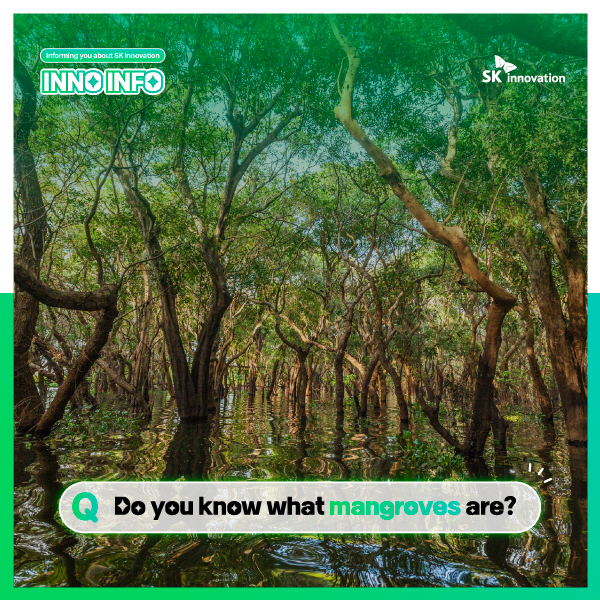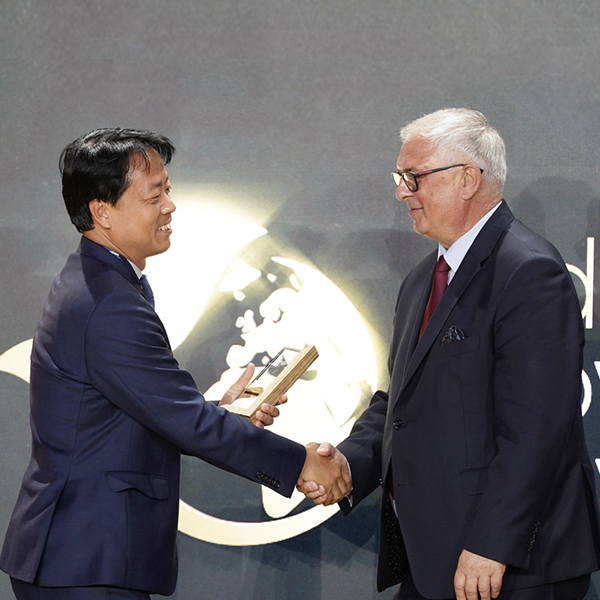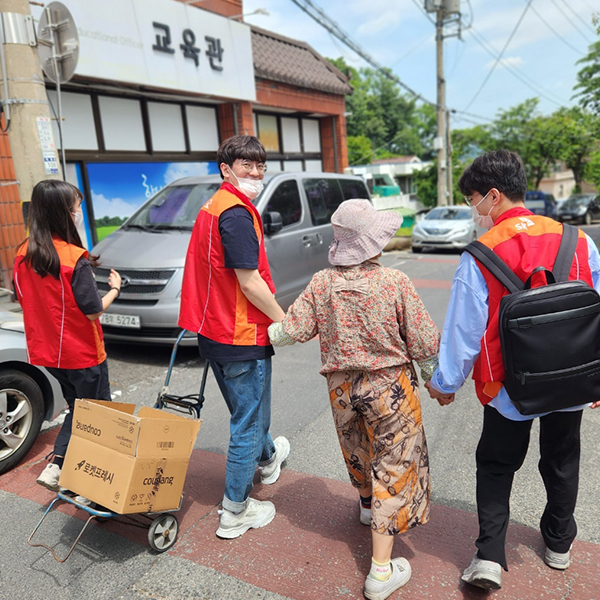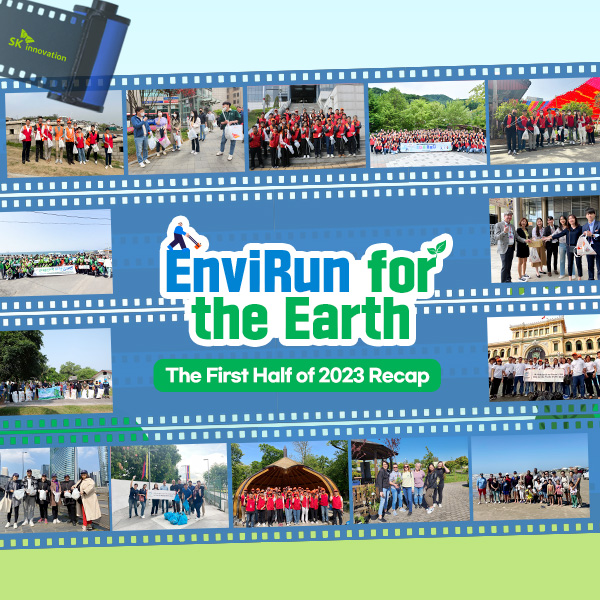 CSR Program
CSR Program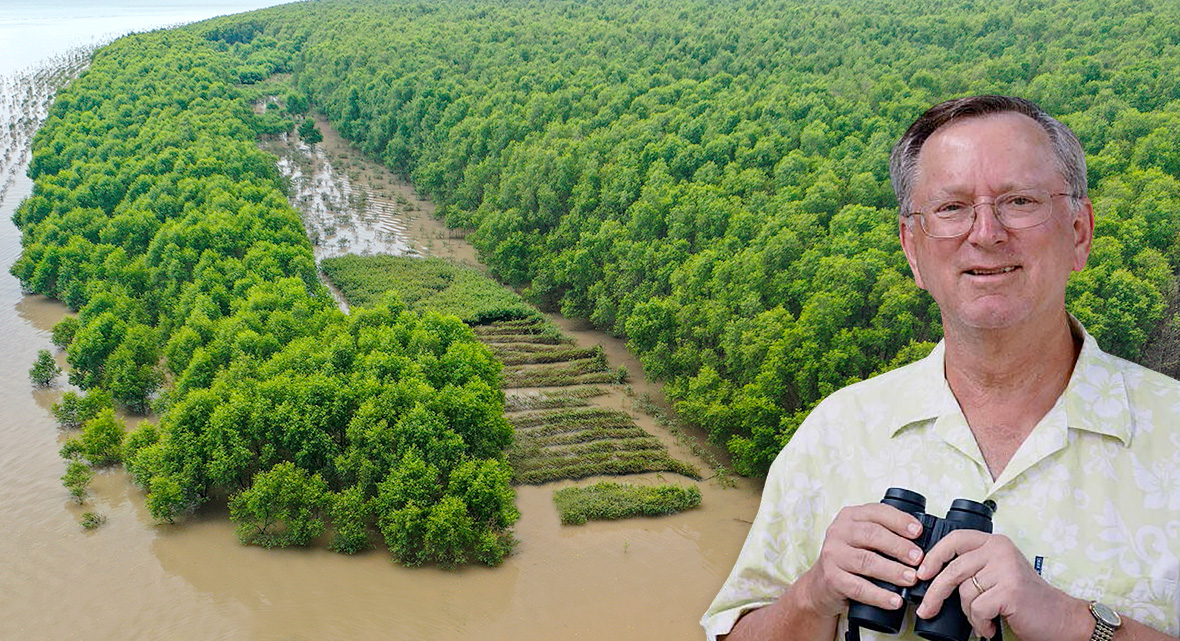
In late 2019 the COVID-19 virus attacked a world made vulnerable to the pandemic by globalization of trade and travel, effects of climate change, resource over-exploitation, and biodiversity loss. Mangrove ecosystems suffered from this convergence of environmental problems but also presented innovative opportunities to address them.
While the human health and economic impacts of the pandemic appropriately are receiving the most urgent attention, environmental issues of biodiversity loss and climate change are at the very heart of the pandemic and affect responses to it. Emerging infectious diseases (EID) such as Covid-19 are driven by dense human populations increasingly disrupting natural ecosystems, globalization is sending this EID around the world even before its symptoms became apparent, and changing climates are affecting drivers such as increasing demand for animal protein, unsustainable expansion of shrimp ponds, and excessive harvest of natural resources that include those provided by mangrove ecosystems.
The fact is, the COVID-19 pandemic was no surprise because new EIDs had been increasing regularly since 1941 and have invariably been linked to environmental factors. Zoonoses, diseases originating in animals that can be passed to humans, were found to be the source of over 60% of EIDs. Humans become exposed to EIDs by encroaching on natural habitats that are rich in species (such as mangrove forests that provide habitats to many species of fruit bats) and harvesting wildlife either as live specimens for the animal trade or as meat for consumption.
Another point that many of us did not realize is that the COVID-19 pandemic was facilitated by biodiversity loss. Biodiversity generates substantial economic benefits, especially through supporting ecosystem services such as adaptation to climate change, producing edible species, supporting tourism, and controlling harmful insects. Growing numbers of humans living in dense urban populations are consuming more of nature’s resources, becoming exposed to new health hazards, taking advantage of the globalized spread of resource consumption, and posing threats to a healthy, productive, and sustainable environment.
The social energy generated by the COVID-19 pandemic provides an opportunity to improve the relationship between people and the rest of nature. Here are four linked policies to consider as part of mangrove-based biodefense and support to human well-being:
1. Use mangroves to demonstrate how a One Health* approach could be applied more widely.
* One Health: a mainstream approach to recognize the intimate connections among humans, animals, ecosystems, and economies.
2. Improve human relations with animals.
3. Use mangroves to restore and expand the land and water supporting wild biodiversity.
4. Build cooperation to address climate, biodiversity, and emerging infectious diseases together.
Regarding the fourth policy, a biodefense approach addressing the COVID-19 pandemic, biodiversity, and climate change crises together could use economic incentives for greening national economies. Investments to support recovery of national economies could include effective responses to climate change rather than supporting fossil fuels; such green investments yield more jobs per dollar invested than do fossil-fuel investments and are being embraced by the mayors of large cities around the world. The co-benefits for health could provide stronger support for such climate change mitigation measures.
In other words, COVID-19 provides a powerful incentive and opportunity to address the interconnected issues of human health, climate change, and biodiversity loss in a coordinated and effective manner: to develop a biodefense system for Planet Earth.
The biodefense can start by ensuring that substantial post-COVID-19 stimulus funding is provided to environmental issues that could include: investments to conserve biodiversity and ecosystem services that serve significant public needs both immediately and in the long term; support rural livelihoods that encourage sustainable agriculture and forest conservation; provide means to enable urban people to become reintroduced to nature; address national climate change objectives, especially using distributed and low-carbon options such as solar power; and support cultural diversity that can apply traditional knowledge to modern sustainable development activities.
Those are what a corporation can actually make efforts to apply. As an example, I could recommend SK Innovation’s Mangrove Reforestation Project, which I had a chance to learn when it was chosen as a representative example of Biodiversity Preservation Projects in Southeast Asia at the 3rd Korea – ASEAN Environment Forum held in Thailand in 2019. I was glad to learn that last year, this project has been extended to Myanmar, which really needs a program like this. As for Vietnam, I worked for the Mekong Committee for several years and even published a book about some of the environmental issues, so I took a great interest in SK Innovation’s project from the beginning. It is heroic that the project was able to meet the targets despite the serious challenges being posed by COVID-19.

▲ Jeffrey A. McNeely (first from right in the left photo)) listens to SK Innovation’s Mangrove Reforestation Project presentation during the 3rd Korea – ASEAN Environment Forum held in Thailand in 2019.
To sum up, the pandemic is not over yet, but we should not neglect the environmental issues either, because they are interlinked and are the long battles that we all have to fight together by taking immediate actions. While many governments and organizations are leading the battle, I hope more corporates will also join to build a stronger biodefense for the future of all creatures on this planet.
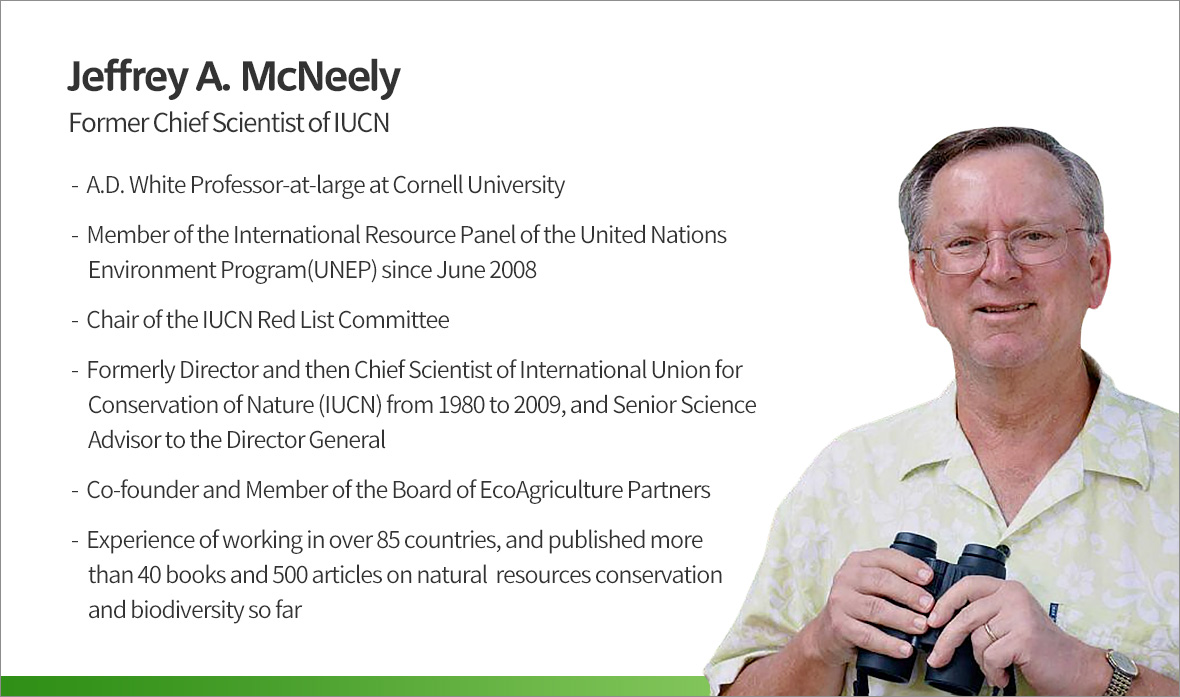
*** Disclaimer: The above content is the column version contributed by Jeffrey A. McNeely to SK Innovation. Please check the attached PDF file by clicking here to read the full article version.
– SK Innovation’s Mangrove Reforestation Project chosen as a resprentative example of Biodiversity Preservation Projects in SEA
– SK Innovation expands the Mangrove Reforestation Project to Myanmar
– SK Innovation enters its fourth consecutive year of Mangrove Reforestation Project in Vietnam










 Youtube
Youtube Facebook
Facebook Instagram
Instagram Linkedin
Linkedin










